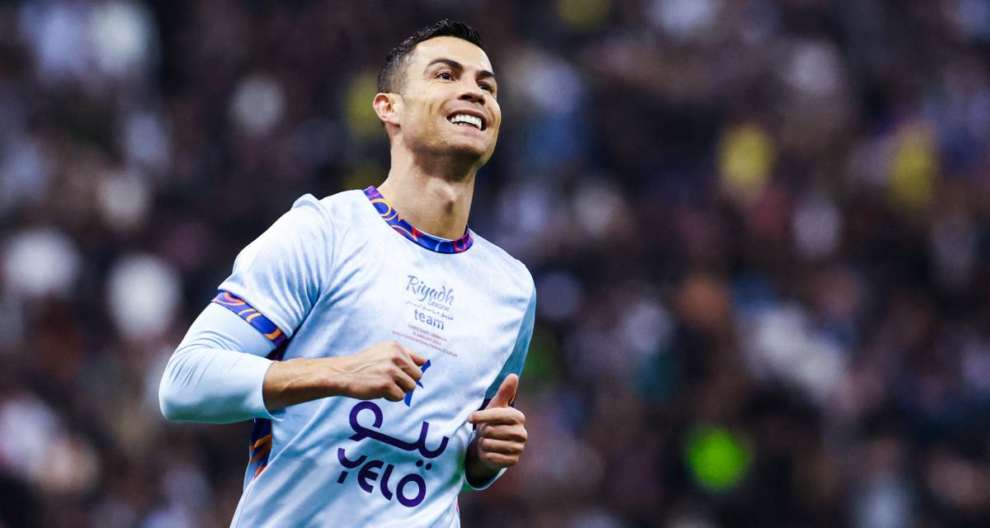And now, the sporting news.
It’s not often that Chanticleer gets to delve into the world of professional sports, but Tuesday night’s news that Saudi Arabia and Russia will extend production cuts that have pushed global oil supply to the lowest point since November 2021 provides just such an opportunity.
Oil analysts suggest there are several important reasons that the Kingdom of Saudi Arabia would extend its 1 million barrel a day production cut into the end of the year.
First, the fact these cuts were made on the same day Russia announced it would extend its cuts of 300,000 barrels a day shows the OPEC+ oil cartel remains as united and powerful as ever, according to JPMorgan energy strategist Christyan Malek.
Second, the production cuts are less about the Kingdom’s fears of a slowdown in oil demand (particularly from a weaker Chinese economy) than they are about the Saudis tightening their grip on the global oil market.
“Saudi is laser-focused on reducing global inventories and has been successful in consolidating its spare capacity to ensure it steers the market in periods of future oil shortages and tightens the grip on oil price volatility,” Malek says.
The early evidence suggests that has been pretty successful. Brent crude rose above $US90 a barrel for the first time in 10 months on Tuesday night, and is now firmly in a bull market, having jumped 25 per cent after touching a low of $US71.84 in mid-June.
There are lots of reasons that Saudi Arabia wants a tighter grip on the oil market. As JPMorgan’s Marko Kolanovic argued in a particularly bearish note on the potential for a crisis in markets in the next six to 12 months, Saudi Arabia is flexing its muscle in the Middle East, leading recent efforts to bring the often disparate nations of the region together.
Kolanovic argues this helps to consolidate Saudi Arabia’s power as it undergoes “rapid economic growth and modernisation”.
“The Middle East and countries like Saudi Arabia may, in these new developments, acquire a status analogous to Switzerland in 20th century Europe: not aligned with any one bloc or warring party, and facilitating trade and dialogue with all,” he says.
Chanticleer would suggest trying to be everyone’s best friend is also probably not a bad position to be in when you’ve got a tight grip on the commodity that the world still desperately needs, and you’re trying to squeeze prices higher.
But gun commodity analyst at RBC, Helima Croft, also says it’s important to appreciate that Saudi Arabia has internal reasons for wanting higher oil prices for longer.
The Ronaldo connection
The Kingdom’s lavish spending on sports, including funding the LIV Golf league and increasingly extravagant transfer fees for soccer players – including signing legend Cristiano Ronaldo on a contract believed to be worth $313 million – is typically read as an effort to hide the nation’s human rights record through a process known as sportswashing.
But Croft argues the spending also speaks to the Kingdom’s Vision 2030 program to diversify its economy and lift the living standards of its young population.
“With about 60 per cent of Saudi’s population under the age of 30, investments in sports franchises are seen as delivering on the key promise of enhanced leisure and entertainment to the Saudi citizenry, as well as boosting national pride. The local sports teams are also viewed as a vehicle to help drive international tourism in the Kingdom,” Croft says.
While the Saudi government has tapped the bond market this year to fund these ventures, Croft says, “oil remains an essential funding mechanism for these high-profile sports and leisure ventures. We continue to contend that revenue considerations and delivering on Vision 2030 will be a key driver for Saudi oil policy.”
The extended Saudi production cuts come against a backdrop of growing demand and stark underinvestment in new supply. Wilsons energy analyst James Karakatsanis recently warned demand from the likes of China, India, Indonesia and Brazil (43 per cent of the world’s population) will lift global consumption by 41 per cent from today’s levels, while underinvestment in supply since 2016 is now $US1.4 trillion ($2.1 trillion) or 27 per cent below what a balanced market needs.
The higher crude prices we’re seeing, even in the face of economic weakness in Europe and China, speak to the idea that supply and demand are very delicately balanced. And that could be bad news for central banks who believe they are just starting to get on top of the inflation threat of the past few years.
Over the Labor Day holiday in the United States this past weekend, gasoline prices hit seasonal levels not seen in a decade, and the second-highest levels since 1994. In Australia, data from the Australian Institute of Petroleum shows the national average retail pump price was 203.3¢ a litre last week, which is 19 per cent higher than the average price over the last 12 months.
Higher prices flow through economies in many ways of course, particularly in industrial sectors. Tighter-for-longer oil markets could well mean higher-for-longer inflation – and interest rates.
Source : FinancialRevie































